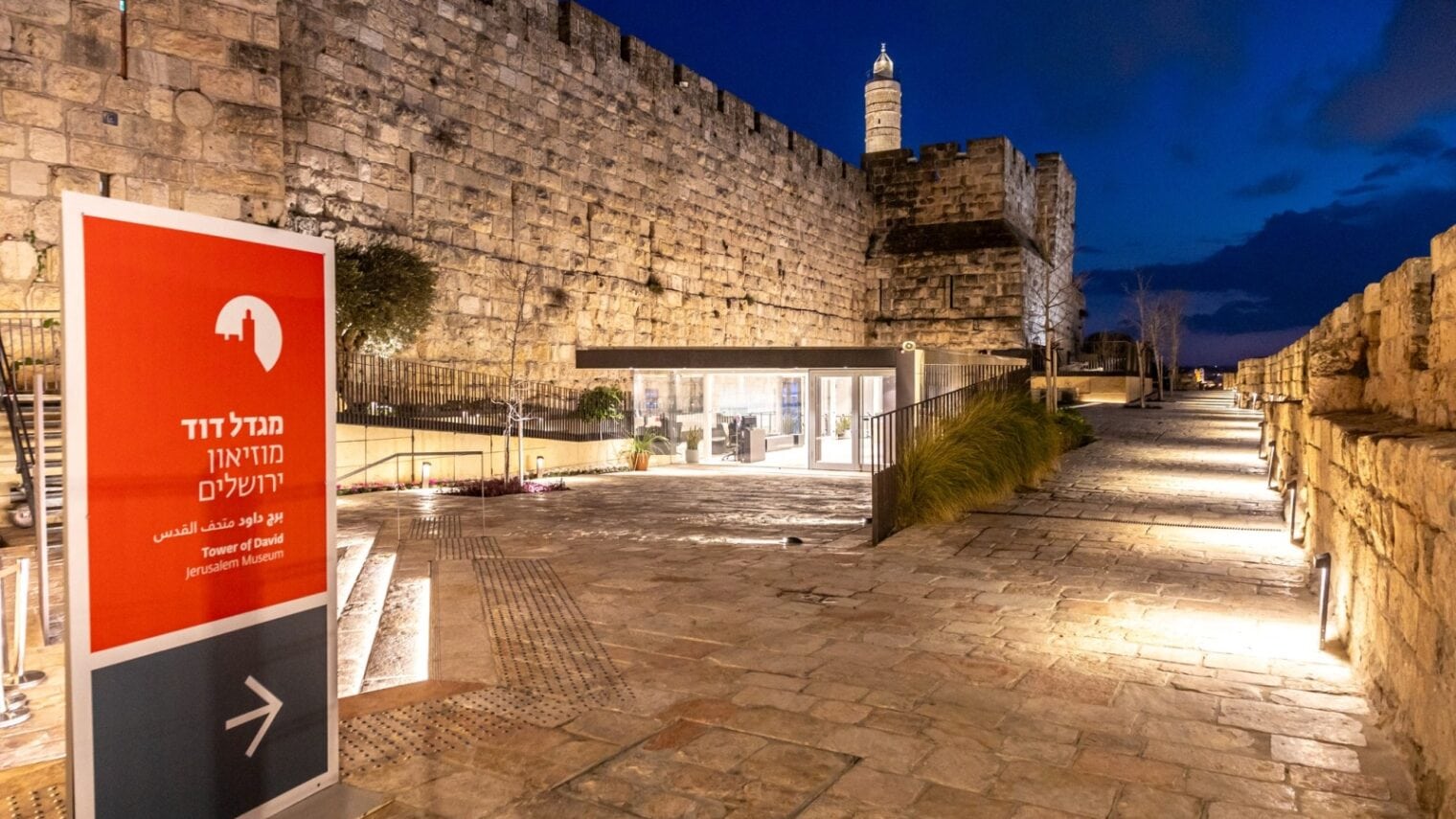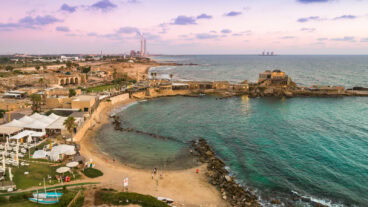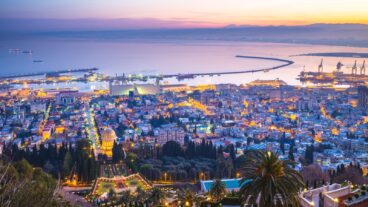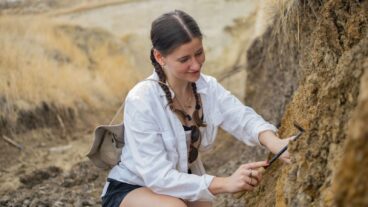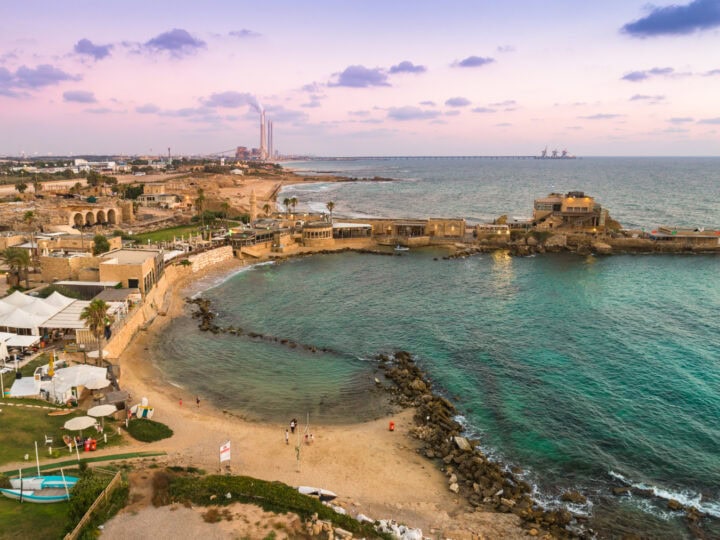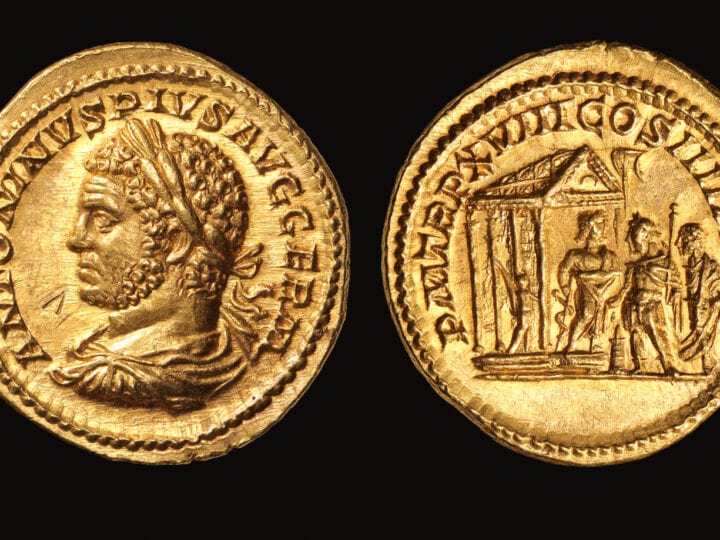Historically, the Tower of David at the entrance to the Old City of Jerusalem served as an imposing city fortress.
Nowadays, the still-imposing fortress has a much more welcoming role as the gateway between the modern city to its west and the most coveted ancient city in the world to its east.
The interplay between modern and ancient recently got an upgrade in the form of the new, sleek Angelina Drahi Entrance Pavilion to the Tower of David Museum showcasing the history of the city.
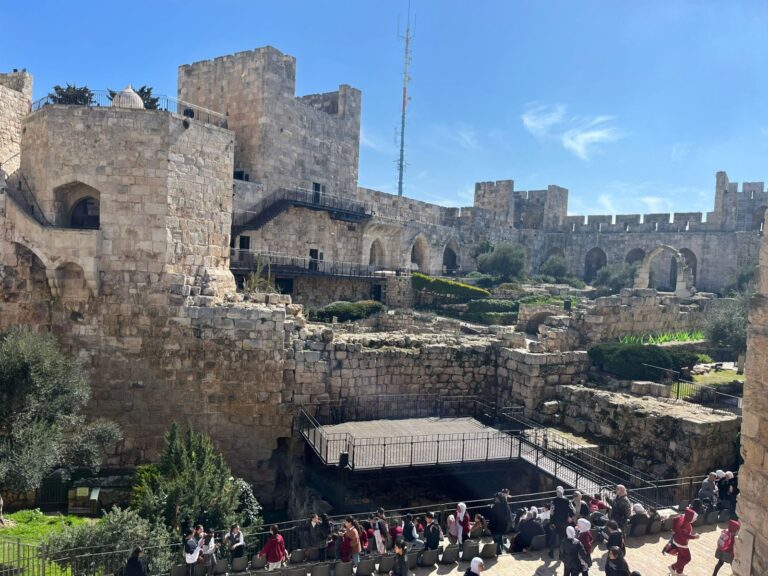
The pavilion easily and accessibly enables visitors to step inside the vast complex that played home to Jerusalem’s many inhabitants over the years – from the Hasmoneans and the Romans to early Muslims, Crusaders, Ottomans and Brits.
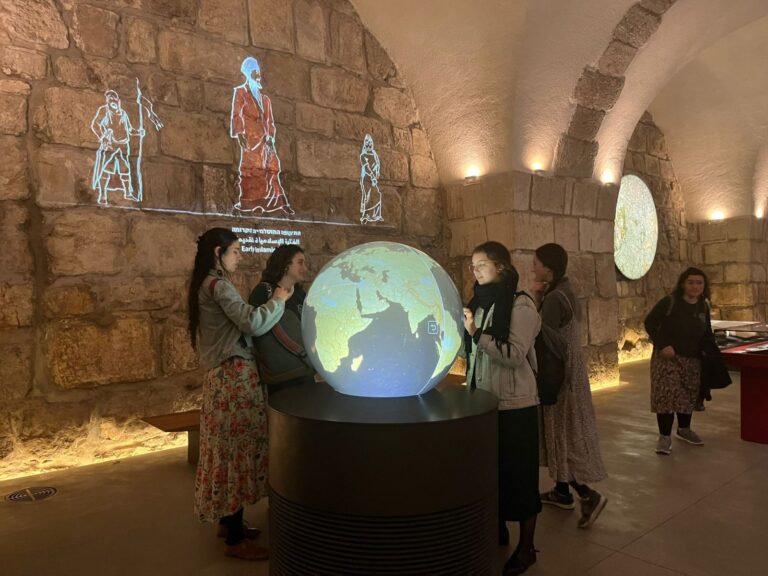
“We see ourselves as ambassadors of Jerusalem and try and showcase its richness and diversity. There is no other place that can demonstrate this sort of sequence,” Eilat Lieber, the director and chief curator of the museum, tells ISRAEL21c.
“We invite visitors from all over the world to visit and discover the richness of the city.”
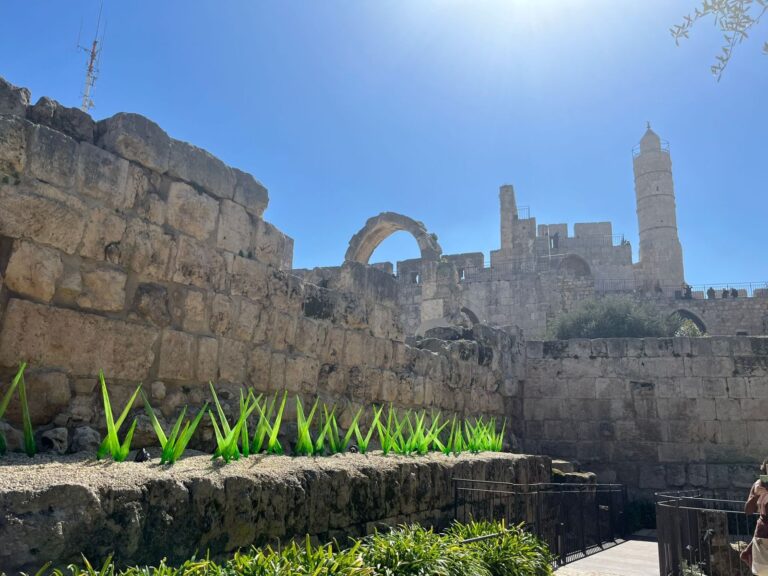
Lieber explains: “Jerusalem was a meeting place for different cultures, and we include the narratives of the city from all periods. We’d like visitors to walk out of here with the understanding that this unparalleled richness was the result of the holiness of the city.”
Visitors enter the site, which dates back over two millennia, through the thoroughly modern entrance recently completed by the award-winning Kimmel Eshkolot Architects. Blending in with such historic surroundings, the architects note, was a challenge.
“The building tries not to be seen, and it’s actually not seen from outside the walls,” explains Yotam Cohen-Sagi, the project’s lead architect. “The entrance pavilion is 12 meters high overall, but you can only see 3 meters of it above ground level.”
“What we did was find space underground,” adds Prof. Etan Kimmel, cofounder of the Tel Aviv-based firm. “It serves the needs of the museum without blocking the fabulous vistas and the views of the museum.”
The construction work was done in conjunction with the Israel Antiquities Authority, which scoured the area that served as a moat for important findings. Luckily, no breathtaking historical item was unearthed, allowing the work to continue uninterrupted.
The architects were also faced with challenges such as somewhat shabby Ottoman design. For example, they were surprised to discover that a massive Ottoman-era wall didn’t go all the way down to the rock surface. This meant that the present architects couldn’t rely on it, and instead had to build an adjacent wall, tethered into its ancient neighbor by means of anchors.
“The floors support the walls that support the old walls,” explains Cohen-Sagi. “It’s a now a mixture of new stone and concrete.”
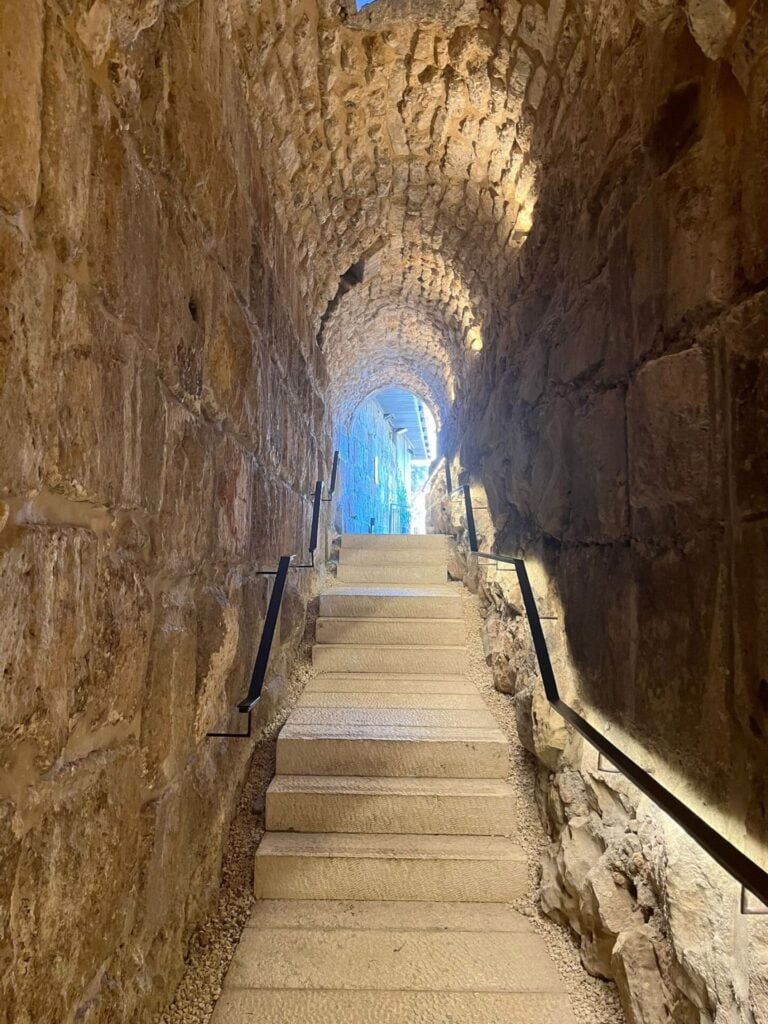
Drilling near an ancient masterpiece also had the potential of being a shaky endeavor, and was done with the aid of multiple sensors drilled down to the rock surface to ensure that nothing would move.
“I came to the chief engineer and said to him, is this wacky, what we’re going to do, because I don’t want to be the person responsible for the fall of the ancient walls,” Lieber admits. “Every night I opened the app to see the results and to see that the wall is not moving at all. It was very scary.”
The new pavilion has rerouted the flow of the tour inside the museum, which contains an inviting mix of ancient architecture and artifacts together with video art, technology and interactive exhibits.
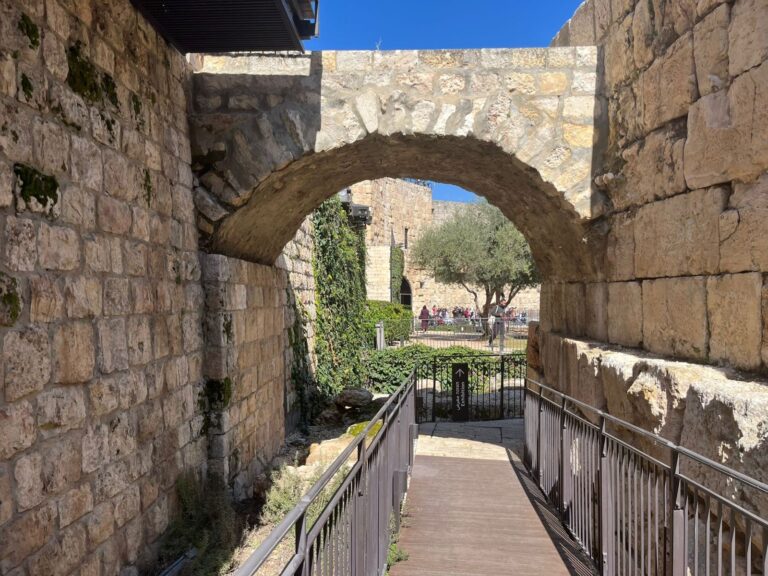
Visitors can wander through the Jewish, Muslim and Christian sections of the Tower of David and the Old City, either on their own or on daily guided tours in Hebrew and English.
The Drahi Pavilion itself houses ticket counters, offices of the education and curation departments, and a large gallery for rotating exhibitions. The first exhibition is dedicated to more contemporary times, showcasing artists from the “Jerusalem School” of the first half of the 20th century.
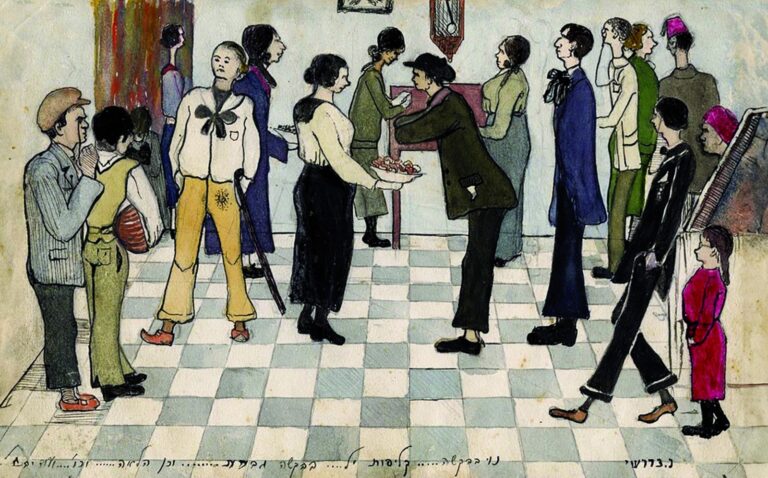
The museum also hosts events in the beautiful courtyard within, geared to all the different communities in the city, and operates tours of the Old City and Jerusalem’s historical neighborhoods.
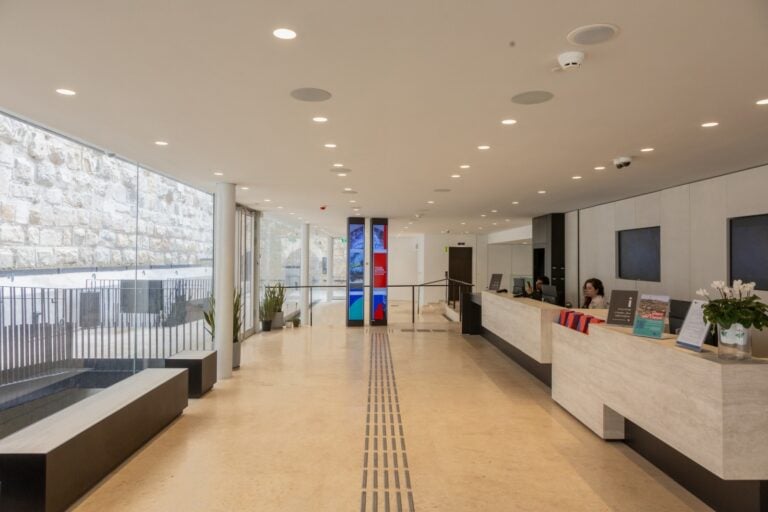
“The diverse, wide and deep story of Jerusalem is our greatest advantage,” says Lieber.
In May, a café is expected to open in the new pavilion, including a shaded outdoor seating area with a breathtaking view of the Old City and Jerusalem.
For more information about the Tower of David Museum, click here.




